Influencer marketing has skyrocketed in popularity over the years.
At the same time, what many marketers don’t think about is that influencer marketing has existed for many decades. The only difference today is that social media has made influencer marketing into a commodity.
In recent times, new forms of influencer marketing has also emerged as a result of the preconditions that social media gives.
I am of course talking about micro-influencer marketing.
Since you are here, you already know what influencer marketing is – marketing with the help of influential individuals on social media.
We all know that influencer marketing can generate incredible results, but a general misconception that marketers have is that the more followers a social media influencer has, the better results they will generate. And yes, that is true when speaking about results in terms of volume, but not when talking about ROI. Because the catch is that the more followers social media influencers have, the more they are going to charge to promote your brand. And the problem is that their rates are not always in proportion to the rates that micro-influencers charge, and the ROI they can generate.
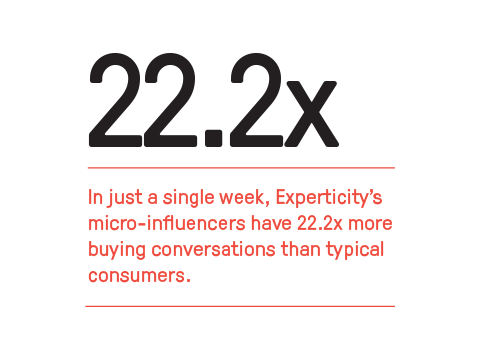
In this article, we will be sharing some of the benefits of working with micro-influencers, and why it is probably a good idea to also start incorporating micro-influencers in your marketing campaigns.
What is a micro-influencer?
A social media micro-influencer is just like a regular social media influencer, but what separates them is their audience size. Social media influencers tend to be divided into different categories based on their audience size. We have micro-influencers, macro-influencers, as well as a few other categories. You ill hear different terms being used by different people, but here are some terms that Mediakix has defined. As mentioned, there’s no clear-cut definition of exact follower count, an different people will say different numbers.
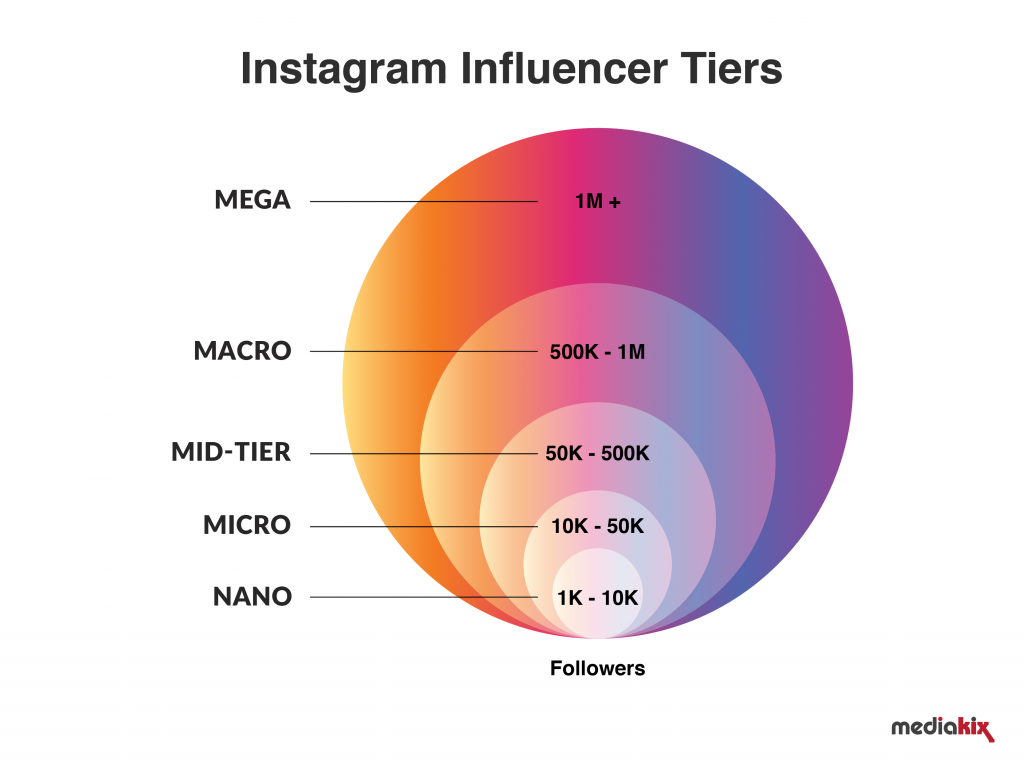
Micro-influencers have the smallest yet most engaged community on social media. When talking about audience size, we’re normally talking about 1K to 100K followers.
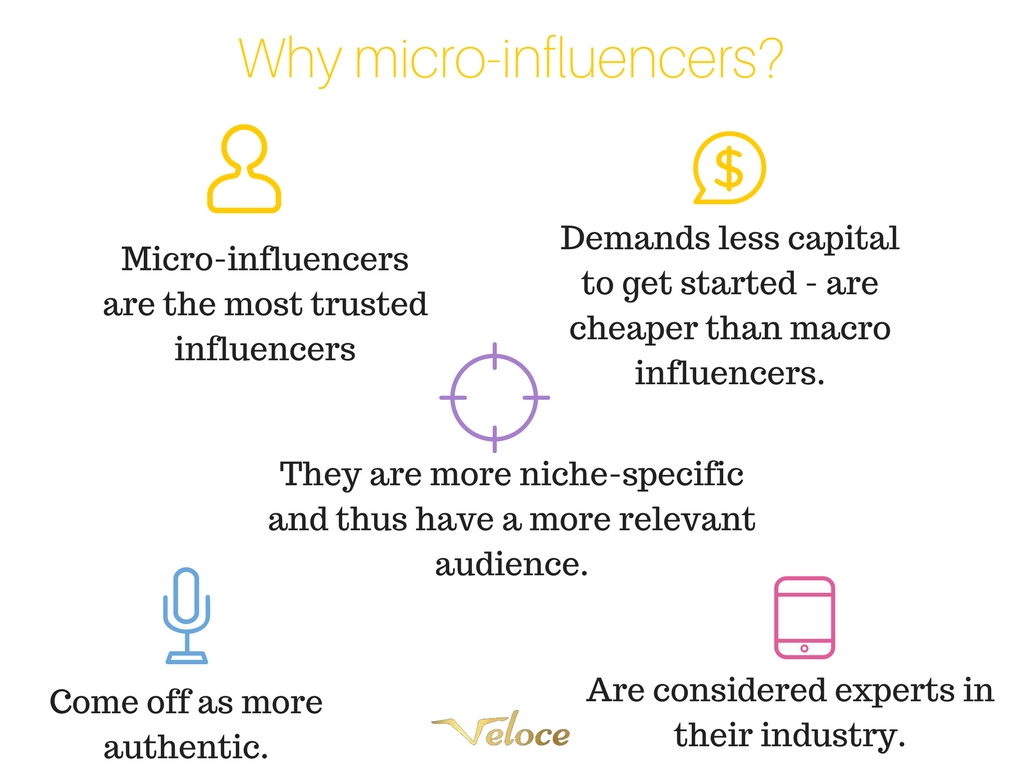
The benefit of micro-influencers is that because they have a relatively small audience, they are able to build a more tightly-knit and engaged community. They are able to engage and interact with their audience on a much deeper and personal level, and thus establish a stronger relationship with their fans than what macro-influencers are able to do.
And as you can understand, having a more engaged audience on social media has significant importance for when they are going to promote products. Because their fans will actually trust their recommendation.
The general rule on social media is that as the number of followers you have on social media increases, the engagement rate tends to decrease. In other words, the level of engagement does not grow at the same pace as the follower count. There are many reasons for this, but some people might create new accounts, others might stop using their social media account, some people will stop engaging with your content and so on. Furthermore, what we have seen in more recent times is that due to the social media algorithms, when you are not engaging with content from a specific account on social media, the social platform will stop showing their posts in your feed as it believes you aren’t interested. This has become one of the main reason the engagement tends to drop over time.
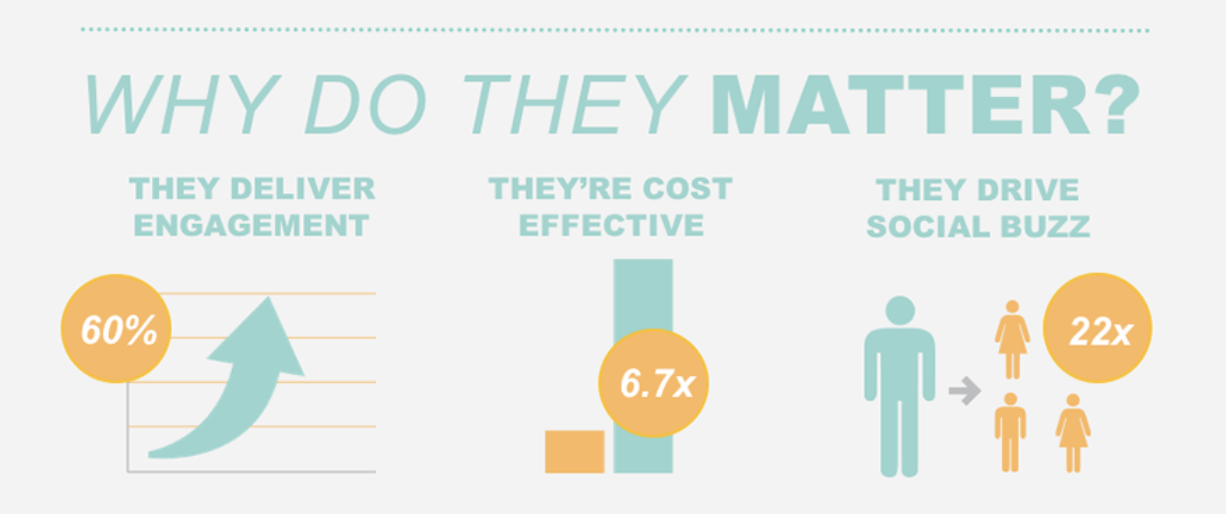
What all of this means is that when you are paying to work with influencers, the cost per follower, in terms of engagement will be higher than if you partner with a micro-influencer. This is because their engagement rate tends to outperform all other influencers.
And what you need to have in mind is that what truly matters for a successful influencer marketing campaign is how engaged the followers are. Not the number of followers the influencer has.
Despite this, follower count is often times the only thing marketers and brands look at before working with an influencer.
It doesn’t matter how many followers a large influencer has if none of them are engaged in the content they share.
What’s more, the followers of micro-influencers are often a lot more targeted and specific to the industry of the influencer, which makes for better results for you as a brand.
Let’s dig right in!
1. Engaged following
As mentioned, micro-influencers usually have a higher engagement rate than large influencers. One reason is of course that the engagement rate tends to decrease as the follower count increase. Another reason is that because micro-influencers are able to build such a tight-knit community, their followers become more engaged as a result.
When brands are looking for influencers to partner with, they often have the wrong approach. Instead of looking at the influencers with the most engaged audience and the most relevant followers (which you should), they search for the influencers with the most followers.
The general belief is that the more followers the influencer have, the better marketing results they’ll generate. And yes, that is true to some extent, but you also need to factor in cost into the equation, and when you do that, it is a completely different story.
Sure, the influencer might drive more sales than a micro-influencer alone, however, for the cost of one large influencer, you could have partnered with 5 or even 10 micro-influencers and generated much better results.
However, what is also important to realize is that just because micro-influencers, in general, have a higher engagement rate doesn’t mean that they are suitable for your brand.
You also need to factor in the fact that there are influencers and micro-influencers within different niches. What’s more, the product that you are promoting has to be aligned with the influencer, their values, and their habits.
The good thing about micro-influencers, that is also part of the reason why they have higher engagement, is that their followers are often much more targeted than followers of large influencers.
In other words, if a micro-influencer focuses on sharing content related to skiing, the vast majority of their followers will consist of people who are truly interested in skiing. What does this mean for you as a brand?
It means that if you want to promote your news skiing product, partnering with the micro-influencer in your niche will allow you to reach the people who truly matter to your brand, and therefore also generate better marketing results.
Think about it:
If a bikini brand partners with Kylie Jenner, only a portion of her followers will be potential customers.
First off, a large portion of her followers are male, secondly, the products may only be available to purchase in Europe and America, and then another chunk of people disappears from the equation.
That way, the people you are reaching by partnering with large influencers might not always be as targeted as the followers that micro-influencers have.
Lastly, another reason that micro-influencers tend to have much higher engagement, especially on promotional posts is that most of them are very strict with only promoting brands that they truly believe in and support.
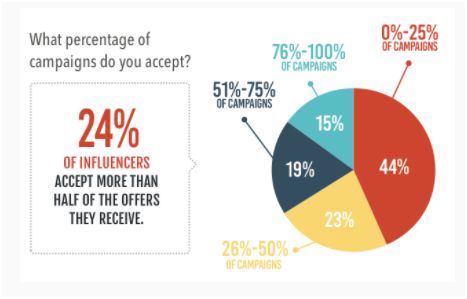
Furthermore, in their campaigns, they make sure that they use their own voice and tone, and not letting the brands decide and set up the whole campaign for them. This results in marketing campaigns that come off far more authentic and trustworthy – and the result is a higher ROI.
This is why it’s important for brands to give creative freedom to both micro-influencers as well as regular influencers, as the influencers can retain their voice and ultimately promote your brand in their own unique way.
A recommendation that we have is:
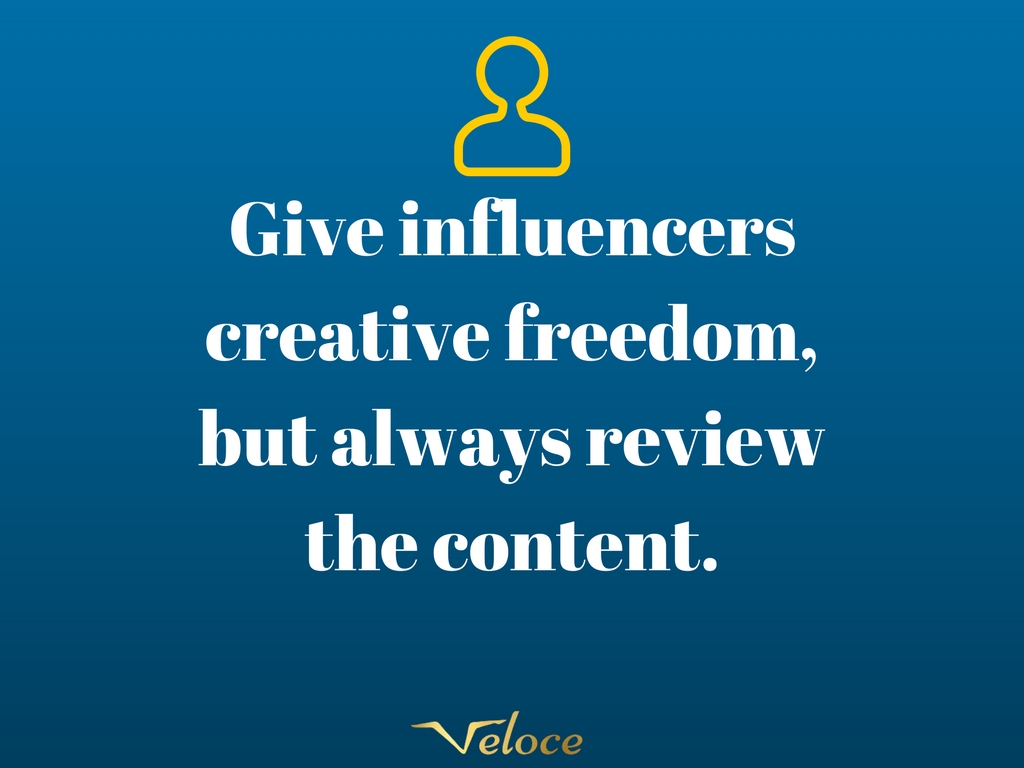
2. More affordable
Since influencers generally base their prices on follower count, micro-influencers are a lot cheaper to work with compared to macro-influencers.
Their lower prices make it possible for virtually any brand to set up influencer campaigns. This has contributed to making influencer marketing a commodity that is accessible for any brand and not just huge corporations with million-dollar budgets.
Back in the days, the only form of influencer marketing that existed was with major celebrities, but as you can imagine, working together with these cost millions of dollars.
Their affordability also makes them popular among startups and small businesses.
A survey conducted by Bloglovin studied the cost of partnering with micro-influencers, and this is what they found:
- 97% of micro-influencers will charge less than $500 for each Instagram post.
- 84% won’t charge you over $250 for each post.
- With a budget of $5000, you can reach out to around 315,000 followers on Twitter, 200,000 people on Instagram, or 125,000 people on Facebook.
The good news is that although the affordable price and relatively small following that micro-influencers have, you can reach the people who truly matter to your brand. This will allow you to get a high ROI and a great bang for your marketing buck.
Furthermore, because of the low cost, you can partner with several micro-influencers simultaneously, and still reach a large number of targeted people, and drive great results. This also allows you to identify which micro-influencers are most suitable for your brand.
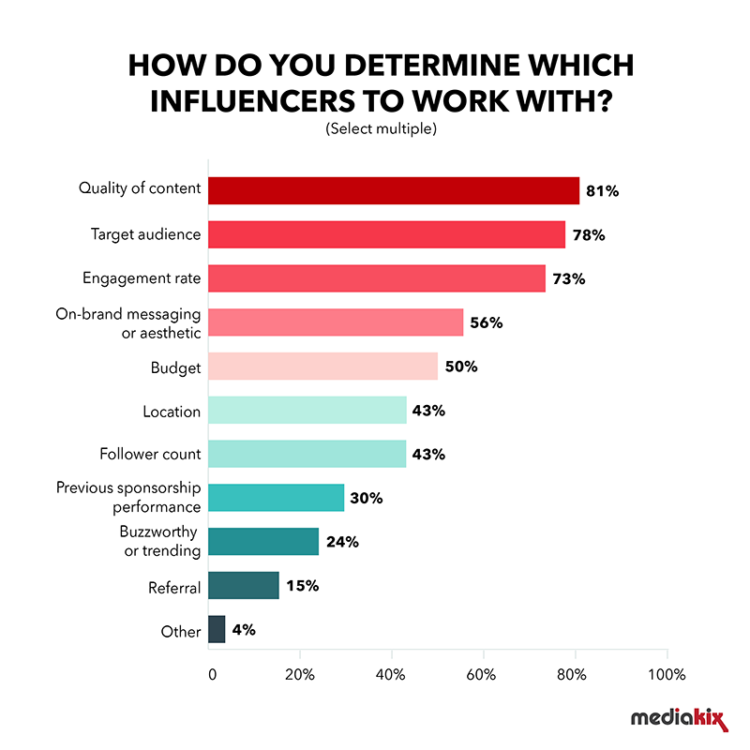
You can partner with some of the top influencers and reach a ton of people in one go, but the problem is that you are going to have to pay quite a lot for it. In fact, the highest-paid Instagram celebrity influencer is Selena Gomez, and for one post on Instagram, she charges $550,000 per promotional post.
As a result, the number of brands who can partner with such major influencers is very limited
The bottom line is that micro-influencers are far more accessible than the major influencers and industry leaders. Yet, still, they have proven to be able to generate amazing results with their marketing campaigns.
In other words, micro-influencers opens up for virtually any brand to take part in the influencer marketing world.
3. Better conversion rates
Overall, micro-influencers have a much higher power of conversion.
Since micro-influencers are focused on one niche and topic, they establish themselves as experts within that particular space Therefore, with that expertise comes loyal followers who are interested in that niche.
Furthermore, since micro-influencers are considered experts in their niche, their recommendations come off as trustworthy and credible, thus making them more impactful. And lastly, since they establish stronger and more authentic relationships with their followers, people listen to what they have to say more carefully.
As a result of more trusted reviews, the micro-influencers can generate a higher conversion rate for brands.
In fact, a study found that a whopping 49% of people say that they trust influencer recommendations to guide them in their purchase decisions.
This, of course, also includes when influencers recommend brands that they are partnering with, which in turn results in higher conversion rates.
A common way that micro-influencers promote brands is through personalized discount codes. This further encourages purchases, as people who look up to the micro-influencers becomes happy when the person they look up to being able to save them money, it works as a way to further incentivize people to purchase.
And for you as a brand, discount codes allow you to track how many people have bought as a result of the micro-influencer’s promotion.
4.You can experiment and learn how to optimize your campaigns
Micro-influencers are cheap compared to the major influencers. But as you know by now, you know that this doesn’t mean they don’t have an impact.
Some micro-influencers are more than happy with getting a product sample from your brand! This is particularly true if you can find influencers who are already customers and fans of your brand. Plus, when you find micro-influencers who are, you have found the perfect fit for your campaign!
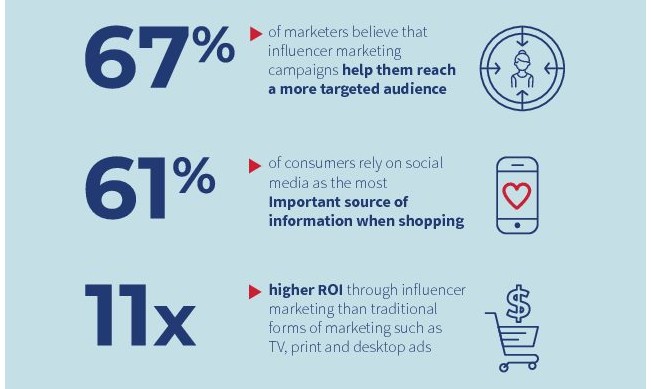
The point is that because they are affordable, you can run multiple campaigns, and then evaluate which of them generated the best results, which calls to actions worked the best, what types of images were captions and more.
When you have been running micro-influencer marketing campaigns for a while, you will find yourself having learned a lot in terms of optimizing your marketing with the help of micro-influencers, solely thanks to the evaluation opportunities micro-influencers give you.
When you have collected enough information about what works best for your influencer marketing campaign, you can implement that into campaigns with macro influencers if your budget allows, or, you can start partnering with more micro-influencers simultaneously.
5.You gain trust and credibility
The reason why people are following micro-influencers is that they look up to them and value what they have to say. This means that they are listening closely to micro-influencers opinions and recommendations. And as mentioned earlier, this also means that people trust the influencers and their words.
When a micro-influencer recommends your brand or products, people are more likely to trust the opinion of someone they look up to compared to if a brand would say the same thing.
In your traditional marketing, it is you as a brand that has to try to convince customers that your products are great. But the problem with this is that people will be a lot more skeptical than if they would get the recommendation from an influencer because 92 percent of people trust recommendations from individuals (even if they don’t know them) over brands. People know companies have a hidden agenda: to sell.
That statistic alone shows the power micro-influencers have to help you gain trust and credibility.
6. They know their audience
You probably know how important it is to use the same language as your customers in order to resonate with them.
You probably also know that it is close to impossible to satisfy everyone.
With micro-influencers however, it is a completely different game. Because of their relatively small following, micro-influencers know their audience very well and they have learned what content generates the best results and engages their audience.
When it comes to this part of the micro-influencer campaign, it is important that you let the influencer do the work because ultimately, they know their audience best. Not you.
Too many brands are committing the mistake of wanting full control over the campaign and “surprisingly” they generate bad results and an ROI. Often because the ad is too pushy and has the semblance of a regular ad. And people can sense this and trust me, they will go the other way.
Conclusion
It’s safe to say that micro-influencer marketing carries many benefits and that it is an effective and affordable way of promoting your brand.
It opens up for small brands with a limited marketing budget to also use influencer marketing and leverage it to their advantage.
The loyal and targeted followers of micro-influencers allow you to generate incredible marketing results that many display advertising methods can only dream about.
If you need help identifying suitable micro-influencers, don’t hesitate to have a look at our FREE influencer directory.


